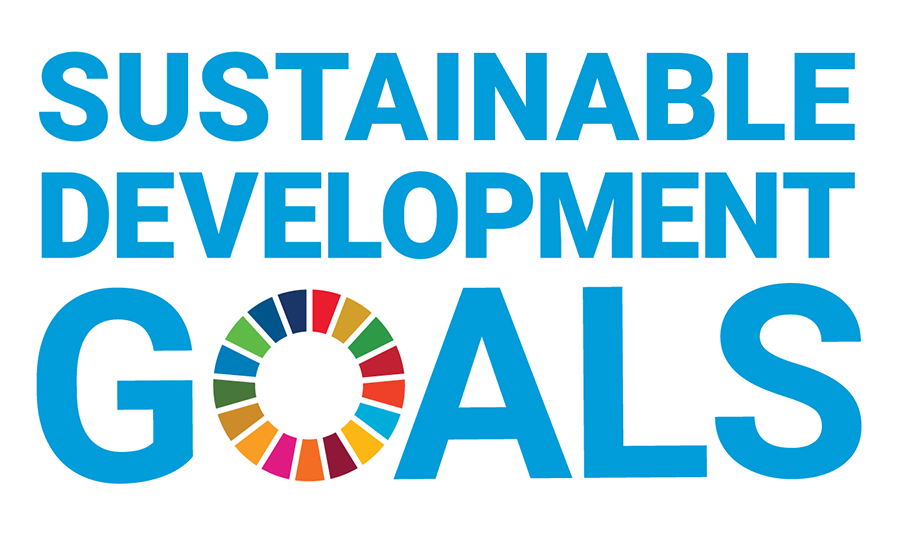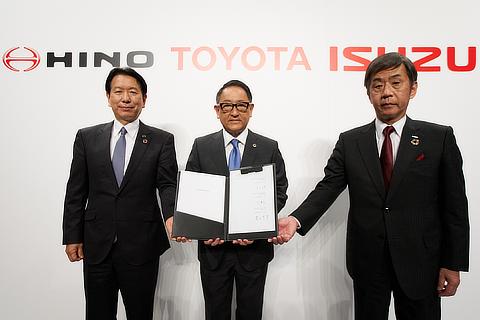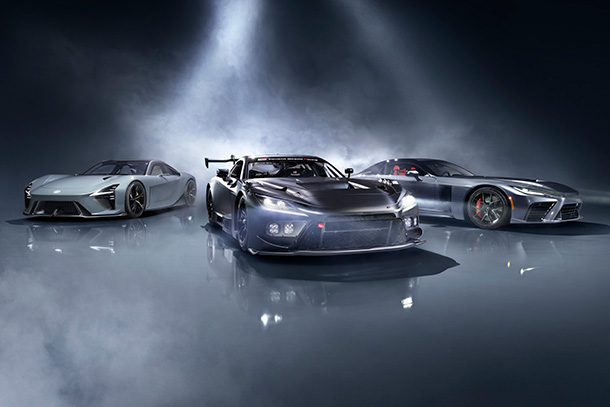Mar. 24, 2021
Video:
Joint Press Conference by Isuzu Motors Limited, Hino Motors, Ltd. and Toyota Motor Corporation
Isuzu Motors Limited, Hino Motors, Ltd. and Toyota Motor Corporation held a joint press conference in Tokyo on March 24, 2021. Click below to view the video.
- Presentation
- Q&A Session
Toyota President Akio Toyoda Remarks
Hello everyone.
I would like to talk about the significance of this partnership by our three companies.
I have long been having discussions with President Shimo of Hino about strengthening collaboration within the Toyota Group.
In our same corporate group, we have Daihatsu, with whom we have in common passenger cars. So, it was easy to create synergistic effects with Daihatsu in car-making.
On the other hand, commercial vehicles are a go-it-alone business of Hino, making it difficult to find a connection with Toyota's car-making, which is centered on passenger cars.
However, the situation has drastically changed due to the CASE revolution.
In particular, it is difficult to popularize electrified vehicles unless they are promoted together with infrastructure. The introduction of the first-generation Mirai fuel cell vehicle made me realize this.
I think that is a good example of knowing after having tried.
Instead of thinking from a manufacturer's perspective of: "We should make this kind of car," we came to think about things from a user's perspective of: "What should we do so that people will use CASE technology?" This led me to see a clear direction for partnership with Hino.
What we are now being called upon to do is refine CASE technologies and disseminate them.
To achieve that, I arrived at the notion that it is important to implement such technologies through commercial vehicles in unison with infrastructure.
And there was one more thing. Viewed from a user's perspective, shippers use both Hino and Isuzu trucks.
If Hino and Isuzu work together, we would be able to face 80 percent of Japan's commercial vehicle customers and come to know their reality.
And if we used Toyota's CASE technologies, we may be able to solve many of those customers' difficulties.
Thinking so, I consulted President Katayama of Isuzu.
To build an ever-better mobility society, it is becoming more important not to only compete but to also cooperate.
This partnership could not be realized even if any one of our three companies were missing.
By utilizing the strengths of our three companies, I think we can help many of our transportation colleagues on site.
This desire to help will also be linked to our hopes for the reconstruction of Tohoku.
Since the Great East Japan Earthquake, I have visited Tohoku every year in March.
That's because I have thought all along that what I can do is never forget about the disaster.
This year marks the 10th anniversary of the earthquake disaster, so I was wondering which site I should visit. As I was thinking about it, I was given an opportunity to visit Namie Town in Fukushima Prefecture, which is advancing initiatives for the future.
On-site, I was able to talk with Fukushima Governor Uchibori and Namie Mayor Yoshida about their thoughts on reconstruction.
One project has advanced since then.
Isuzu and Hino fuel cell trucks are carrying goods using green hydrogen produced in Namie Town.
And we will contribute to the realization of uniform, waste-free delivery by linking "make", "transport", and "use" using connected technology.
Together with everyone in Fukushima, we will make the work of "transport" people easier and propose new lifestyles to people on the "use" end.
We are now living in an uncharted era in which we can't foresee the right direction.
In such an environment, you first have to try. From there you can see what's waiting next and try again. Toyota has survived so far by doing so again and again.
This time, engaging more in the transportation front line, our three companies will work together and try it first.
We have just now stood at the starting point.
Please look forward to the efforts of our three companies as we attempt to get moving from a user's perspective, centered on where the action is taking place.
Hino President Yoshio Shimo Remarks
I'd like to begin by saying that I feel we have made some positive steps in the current framework toward solving problems for our customers and society.
Speaking personally, I have always kept close contact with people on the front lines of overland shipping, with a strong desire to do more to solve the issues our customers confront.
That's the same attitude I have always taken in discussing the partnership between Toyota and Hino with Toyota's President, Akio Toyoda.
With Mr. Katayama of Isuzu, though our companies are rivals, I have always gone beyond that position to discuss with him ways to coordinate together to solve the problems that logistics operators and drivers confront.
It is against this background that I can say today I am absolutely delighted to begin this new initiative among our three companies.
I'd like to start with a few remarks about the front lines of overland shipping.
Today there are over 60,000 logistics companies operating in Japan.
Every day these companies load, haul and deliver cargo.
It's hard work, yet everyone involved in overland shipping takes great care with each and every package, determined to deliver it surely to each waiting recipient.
At Hino Motors, we share the perspective of our customers working at the heart of the lifeline that is overland shipping and are working hard to solve a slate of problems.
But the environment enfolding the logistics industry is unforgiving. If things continue as they are, the day may come when those packages stop being delivered.
One issue is a shortage of drivers. The reason is that nobody is willing to take the job.
Driving trucks is a tough way to earn a living. The risk of traffic accidents is ever-present, the hours are long and it involves a lot of work besides driving.
Long-haul drivers often spend as much time on work other than driving as they do on driving. Sometimes even more.
For example, loads of various shapes and sizes can take two hours or so to load. Then they may drive for five hours, wait an hour for their receiving appointment, then spend another two hours on receiving inspection and unloading.
Short-haul delivery work is no picnic either. With the explosion in e-commerce, multi-product, small-lot distribution and strictly scheduled delivery times are making burdens on drivers ever heavier.
The second issue is shipping efficiency.
In overland shipping, top priority is on delivery times and location specification.
Cargo volumes vary with the season and time of day.
These factors make it difficult to ship efficiently. Trucks are often empty on the return trip. The reality is that loading efficiency currently hovers below 50%.
The third issue is carbon neutrality.
Reducing CO2 emissions from overland shipping in Japan is necessary to achieve carbon-neutral operation.
Just replacing old fleets of trucks with electric ones will not suffice.
Unless cost-effective, user-friendly electric trucks come into widespread use, we will never meet our targets for CO2 reduction.
I mentioned shipping efficiency earlier. This is an extremely vital factor in reducing CO2 emissions from overland shipping, aiming for carbon-neutral operation.
As you can see from the points I just listed, society's expectations of overland shipping are growing too burdensome for us to solve the problems completely.
In seeking solutions for these problems of overland shipping, there are many areas in which individual companies can and should cooperate with each other.
By coordinating with each other in a connected manner, companies can reduce waiting times and improve loading efficiency.
This partnership will also make it possible for more and more operators to adopt electric trucks.
Moreover, as these solutions make progress, we can expect work in overland shipping to become more attractive, so that the number of drivers and others involved in logistics will grow.
We are working transparently with logistics operators and others in overland shipping to transform logistics, so they can deliver the goods people want when they want them, bringing greater satisfaction to communities.
Isuzu President Masanori Katayama's Remarks
This is my sixth year as president. While various occurrences have been taking place every day, I have been constantly thinking about what a company is. My conclusion: a company is "the power to achieve innovation for society and the attitude for doing so".
This innovation is essential for the automobile industry, which faces the huge wave of CASE, with little time left and no time to wait.
Also, achieving the government's Green Growth Strategy is a grand challenge that can only be achieved when innovation in all industries, including the energy and manufacturing industries, is realized. It also depends on a delicate structure in which a delay in the transformation of one industry can disrupt the overall harmony.
As a commercial vehicle manufacturer, feeling that we had to fulfill the responsibility of meeting that challenge at all costs, I have continuously thought about taking every opportunity to innovate. Isuzu's partnerships with Cummins and the Volvo Group are efforts that we have been promoting with this very idea.
While commanding management every day with such thoughts, I have had opportunities to talk with President Toyoda and President Shimo about our shared passion for customers, society, and manufacturing.
I feel that that passion provided the impetus for this partnership.
Of course, Hino is our biggest rival, and we are fighting it out with them every day all over the world. That will never change. However, at the root of our competition is a common desire to improve logistics and society.
Also, although Toyota is a passenger car manufacturer, there is no difference between passenger cars and commercial vehicles when it comes to Toyota's desire to make society and Japan better.
Toyota is a company that has brought about a seemingly uncountable number of innovations since its inception. In terms of manufacturing, there is the Toyota Production System, and in terms of electrification, there are hybrid vehicles and fuel cell hybrid vehicles.
Hino knows commercial vehicles best. Toyota has a huge amount of technology and a powerful ability to execute, both of which have a high potential for playing a role in small commercial vehicles.
We have concluded that if our three companies work together, we will be able to innovate to overcome the rough seas of CASE and provide our customers with light-duty trucks―solutions―that are even more useful.
Next, I would like to explain the technical partnership agreed upon by our three companies.
First, I will talk about the electrification of commercial vehicles.
Becoming carbon neutral is an issue that must be addressed not only by the automobile industry but also by the entirety of Japanese industry. Many of our customers, including logistics companies, who are working to reduce CO2, have consulted us about electrified vehicles.
Reducing costs and developing infrastructure are among the many issues facing the popularization of battery electric vehicles (BEVs) and fuel cell electric vehicles (FCEVs). However, through our new partnership, our three companies will jointly work on the battery electrification and fuel cell electrification of light-duty trucks, reducing vehicle costs, and, at the same time, we will work with society and our customers to promote BEVs and FCEVs in earnest, including through societal implementation in Fukushima Prefecture.
Another point has to do with connected technologies and services.
Increases in distribution volumes are leading to labor shortages. Redelivery and busy cargo handling are increasing driver burden. And the advance of digitalization has created new and growing transportation needs. To respond to these and other issues we must respond to the profound transformation of industry in this age of digitalization.
The lean and efficient movement of trucks can contribute to achieving carbon neutrality. And connected technologies hold the key.
We would like to tie into the platform of Hino and Toyota, and with the participation of other partners, we will build a connected platform for commercial vehicles that will lead to solving customers' problems, and we would like to consider providing various logistics solutions.
As others might share our aspirations for this partnership, we will always maintain an open stance.
Finally, Toyota and Isuzu have concluded a cross-shareholding capital partnership agreement. This is an example of Toyota's ongoing "making of friends", and I look forward to this capital relationship supporting the acceleration and success of joint technological development.
Toyota Motor Corporation works to develop and manufacture innovative, safe and high-quality products and services that create happiness by providing mobility for all. We believe that true achievement comes from supporting our customers, partners, employees, and the communities in which we operate. Since our founding over 80 years ago in 1937, we have applied our Guiding Principles in pursuit of a safer, greener and more inclusive society. Today, as we transform into a mobility company developing connected, automated, shared and electrified technologies, we also remain true to our Guiding Principles and many of the United Nations' Sustainable Development Goals to help realize an ever-better world, where everyone is free to move.
- SDGs Initiatives
- https://global.toyota/en/sustainability/sdgs/













